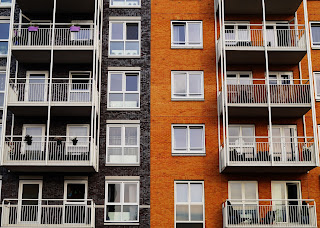The Supplemental Nutrition Program (SNAP) was,
and still is, a program created with the intent of improving the health and
well-being of low-income individuals, the elderly, people with disabilities,
and other groups of people by providing them with a means to meet their nutritional
needs. In Oregon alone, more than 680,000 people receive SNAP benefits. Unfortunately,
not many homeless individuals use SNAP benefits because of pre-existing myths
about SNAP food stamps. These myths are damaging because they imply SNAP is not
easily accessible to homeless individuals because they must meet so many
different criterions during the application process.
The Oregon Department of Human Services (DHS) is tasked
with providing SNAP benefits to anybody who finds themselves in a crisis such
as homelessness, domestic violence, and more. Despite this fact many of the homeless
in Oregon have not applied or taken advantage of the SNAP program because of
myths they have been led to believe. For example, one common myth regarding
homelessness and SNAP benefits suggests that the only way to receive SNAP
benefits is to have a housing and a mailing address which is not true. SNAP
benefits are available to individuals who do not have a housing or a mailing
address. Another myth is that you need a photo I.D. to get SNAP benefits. Yes,
you need proof of identity to sign-up, but the SNAP program allows one to use basically
anything for proof of identity, like a school I.D. or a work badge. You also cannot
be turned down for SNAP benefits just because you cannot provide photo I.D. And
homeless individuals who get free meals at soup kitchens also qualify for SNAP/Food
Stamps. This means that homeless individuals can get SNAP benefits even if they
are staying on the streets or already taking advantage of the homeless shelter/soup
kitchen benefits.
Homeless people in Oregon, and nationwide, have trouble receiving food stamps because they buy in to such myths. But many other factors also make it even more difficult for the homeless to access food stamps. Consider how the National Coalition For The Homeless states that over half the homeless population in America does not receive food stamps (i.e., SNAP in Oregon) because of a lack of knowledge that such programs even exist. Essentially this implies that the homeless population in Oregon might struggle to meet their adequate nutritional needs because of 2 things; false myths and a lack of proper knowledge regarding what one needs to meet SNAP benefit requirements. Maybe this relationship is worth looking into more.
Sources:
https://www.usich.gov/resources/uploads/asset_library/myths-homeless.pdf
http://apps.state.or.us/caf/fsm/06fs-a.htm
https://oregonhunger.org/snap-overview/
Image
sourced from:
https://www.nbc12.com/2020/12/06/virginia-continues-emergency-snap-benefits-decemeber/











